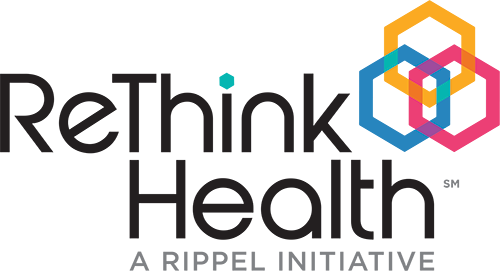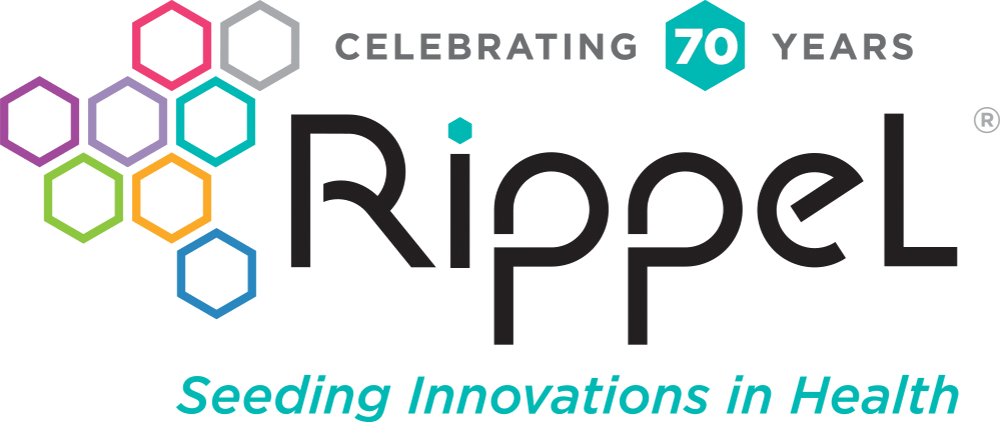The Stew BLOG
Distributing Leadership to Transform Health Ecosystems
As you read in our recent blog series on comprehensive regional strategy, transforming the ecosystem that produces health and well-being requires both a sound regional strategy and the right team of regional stewards to execute that strategy. Now you might be asking: what happens after you have those in place? Before our holiday hiatus, Stacy Becker began to reveal our answers to that question when she introduced our updated Pathway to Transforming Health Through Regional Stewardship. The Pathway describes the state of stewardship, including what stewards focus on in each of five phases of transformation. Especially in the first three phases, stewards explore the best ways to lead together as they expand their team and develop their strategy-setting themselves up for long-term success. Stewards of regions that are most advanced along the pathway are finding that distributed leadership is essential for achieving their vision.
So what exactly is distributed leadership, and how does it play out in the context of transforming regional health ecosystems? Leadership is often conflated with directing the actions of others, but distributed leadership is a little different. Our definition is adapted from the works of J. Richard Hackman and Marshall Ganz: leadership is creating the conditions for others to accomplish great things in the face of uncertainty.
Here at ReThink Health, as we explore how stewards can pursue complex regional strategies, we see the diverse set of players that is responsible for the many moving pieces. Spoiler alert: this work can’t be led by one organization or one CEO. It may not even be one multisector partnership. Instead, leadership is best shared across people (including residents of the region), organizations, and groups that all form working relationships to do transformative work.
The practice of sharing leadership among many players is known as distributed leadership. Distributed leadership can be thought of as both a governance structure, which specifies leadership accountabilities for different groups and the relationships between them, and as a practice, a way that individual leaders can think and act. Within a distributed governance structure, integrative activities—which involve governing and managing the work happening within and across collaborative partnerships in a region to achieve a common purpose—are distributed among many groups and individuals rather than owned by a single entity. Distributed leadership shifts focus onto relationships among many parties, with each party taking some responsibility for leading on behalf of the whole and building alignment through relationships and mutual commitments.
We’ll get into the details about integrative activities in the next two posts in this series. But for now, let’s focus on why distributed leadership matters. In thinking about governance structures, it can be helpful to think about your own experience. First, look at these side-by-side images of common governance models.
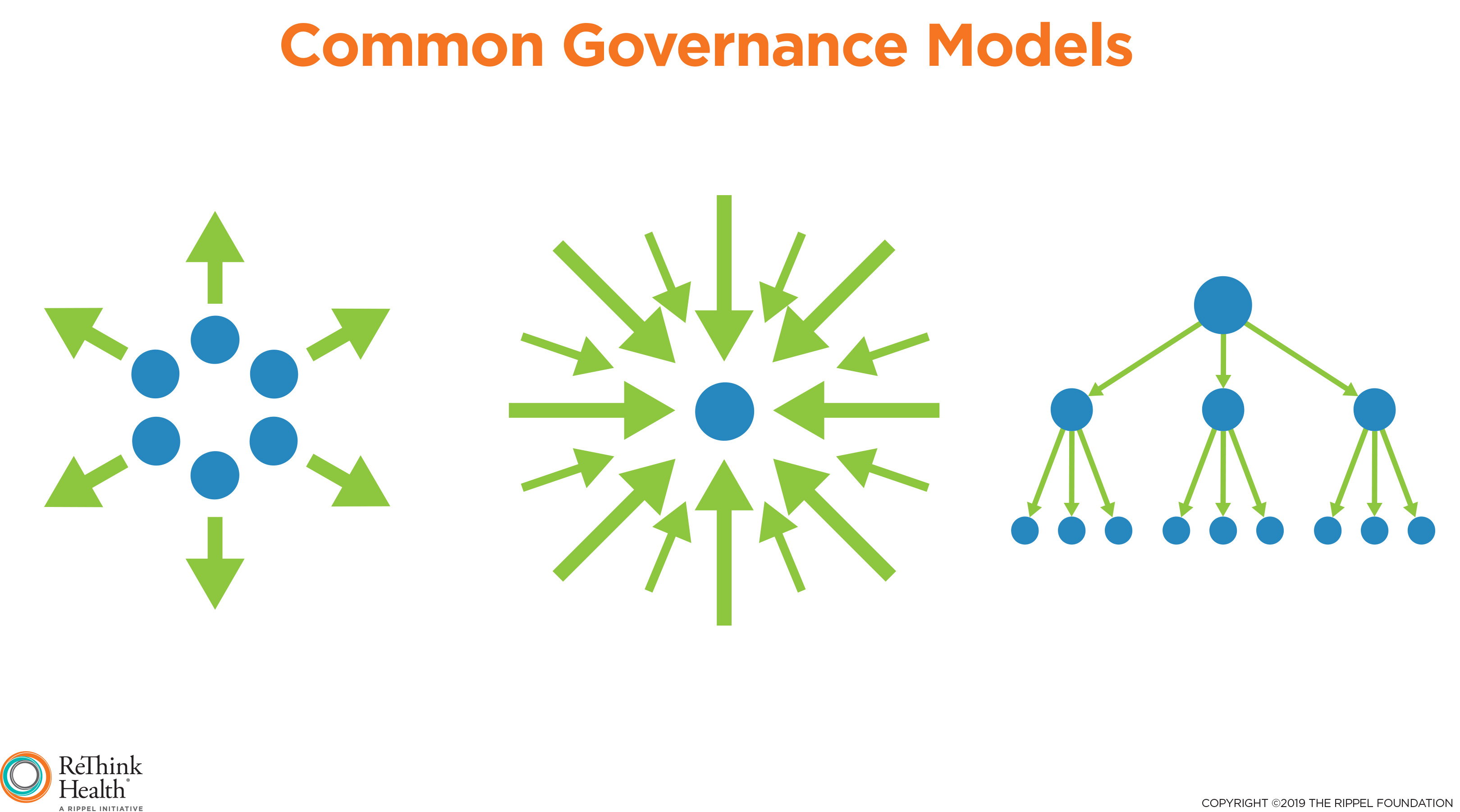
Now, take a moment to think about how your organization or team is led. Ask yourself:
- Does one person or organization take on everything under the sun? What does that feel like for the person or organization doing everything? For the rest of the team?
- Is it unclear who is leading? If so, is your work fragmented and suffering from lost momentum?
- Is there a hierarchy in which one person or group directs everyone’s specific actions? What happens when someone needs to use their own judgment?
If you have worked in one of these three models, you can likely speak to both its benefits and pitfalls, and you might be able to predict how it will work for leading a complex transformation effort. Now, consider these images. Imagine the dots are the regional players involved in stewarding your regional health strategy, each with its own roles and leadership functions that it does on behalf of the group.
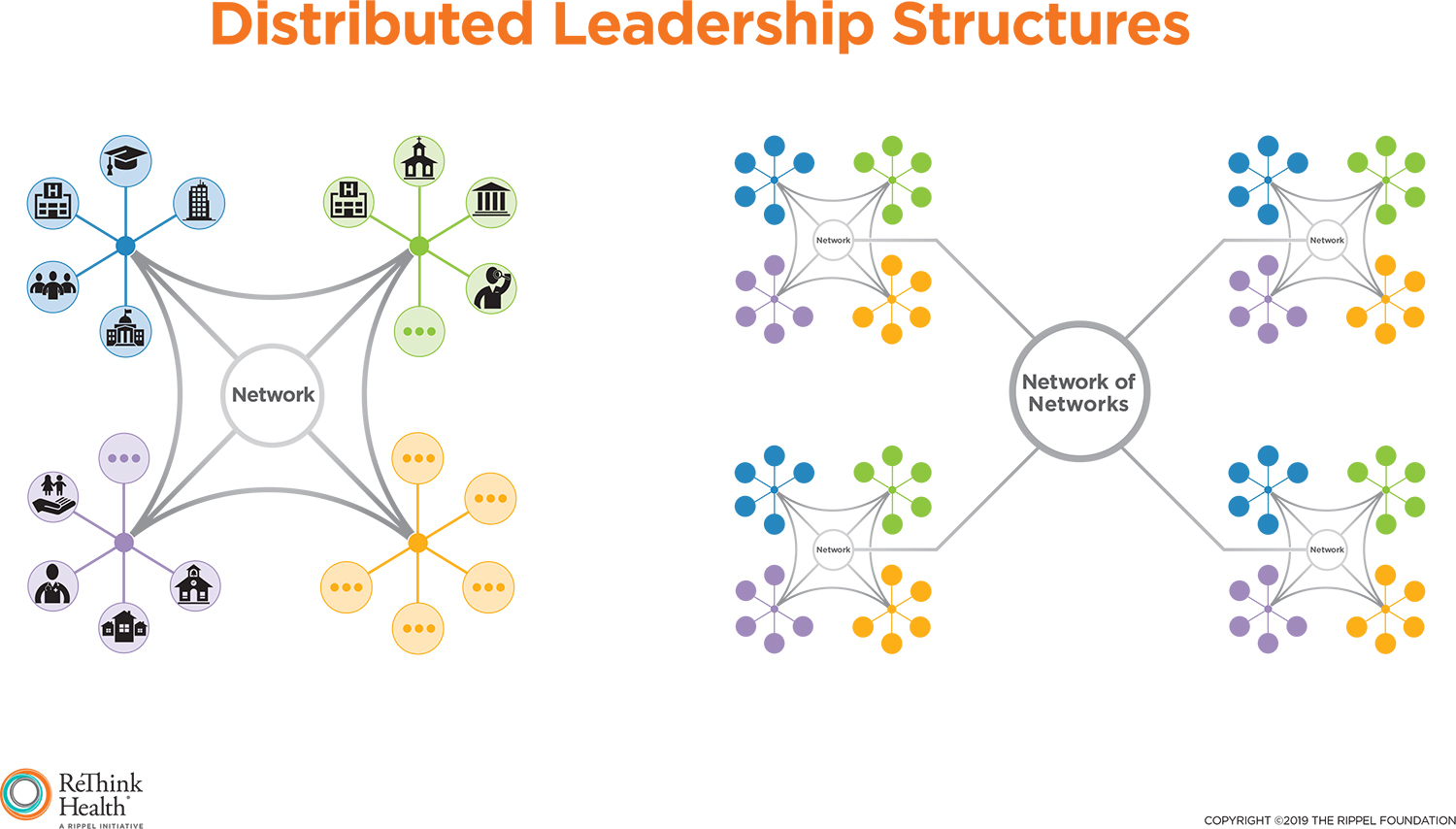
Can you imagine how regional players might distribute leadership across them, sharing responsibility and accountability, honoring their explicit commitments to each other, and staying connected via intentional relationships?
Distributed leadership brings out the unique and valuable contributions of all stewards
As we said earlier, stewards of the regions that are most advanced along the pathway are adopting a distributed leadership practice and governance structure like the ones depicted just above, and they are recognizing the benefits. They’ve discovered that transforming a regional health system is complex work; more than any one leader or institution can do effectively all by itself. Distributed leadership [OR A distributed governance structure] invites stewards across your region to collaborate in this work and allows for all involved to share perspectives and contribute resources. In no region is there an umbrella under which all of the sectors and institutions that influence health operate, nor should there be. Distributed leadership offers an alternative to more hierarchical structures, in which organizations submit to another’s authority over their operations, and instead recognizes the unique and valuable contributions each can make.
Perhaps you’re thinking, “I love the concept, but my regional health strategy is so complex and dynamic, I’m not sure how I can give up control and share leadership with five other organizations, and perhaps other networks as well, without chaos and conflict.” Those are valid concerns, but don’t let them prevent you from considering the idea further. Distributed leadership is not something that happens overnight, and if you pursue it only halfway you will most likely get the results you fear. As the pathway shows, over time, stewards can and do form solid relationships, develop trust in one another, and make explicit commitments so they can be sure they will get what they need from each other. There is plenty of evidence that it works for those who commit to what it takes.
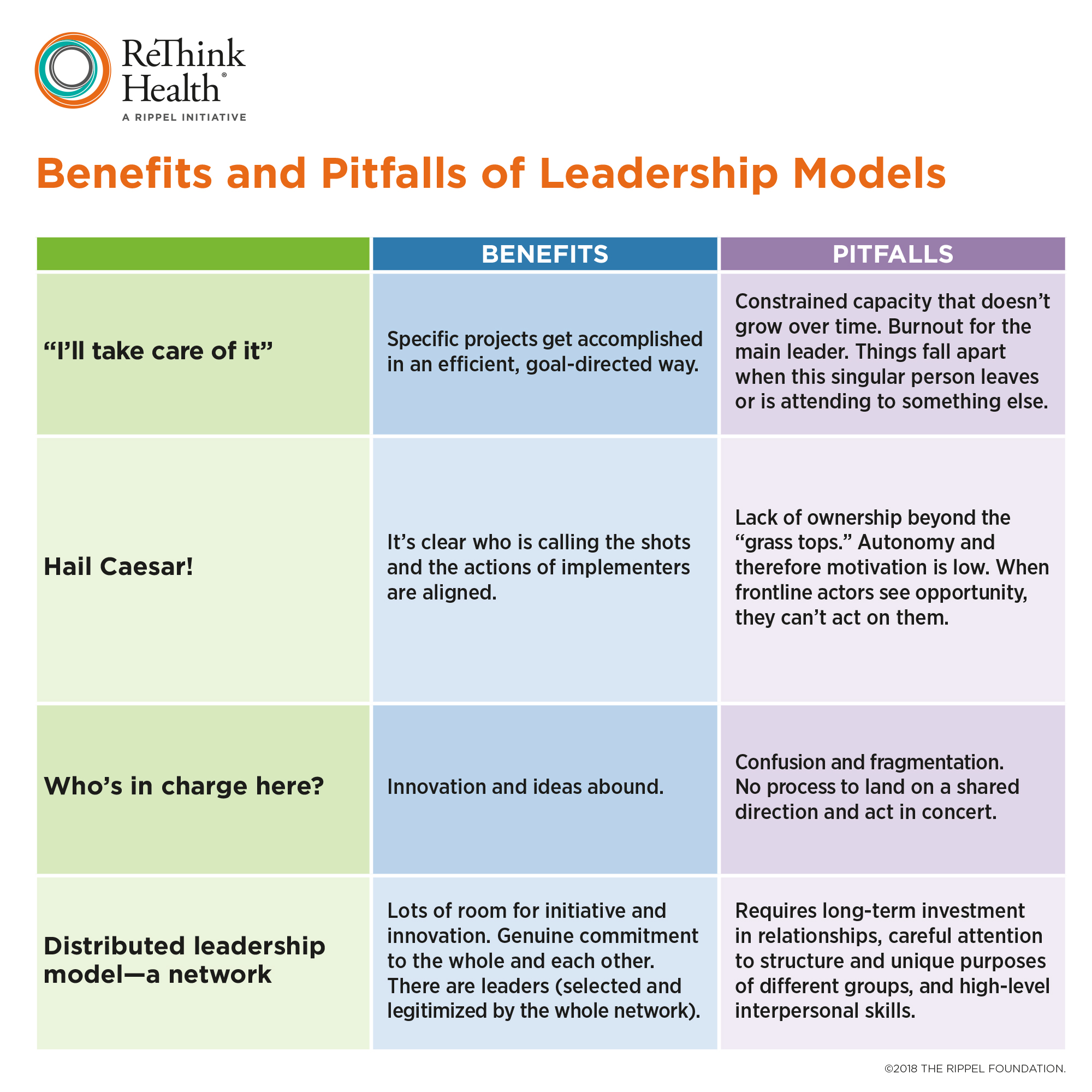
The Orpheus Chamber Orchestra is an example—a complex system in which distributed leadership has worked successfully. This orchestra operates with no conductor. That’s right, no conductor! The musicians share leadership to interpret the score during rehearsals and performances, and they play brilliantly as an ensemble. Each musician has a clearly defined role within the orchestra, and the leadership (selected carefully by the entire group) is intentionally rotated for every piece they play, but there is no single person in charge at all times. The members of this orchestra know what they have to do be good leaders and good followers. The orchestra benefits from the perspectives and abilities of all members, without relying on a hierarchical structure. It has even won several Grammy awards.
We also see evidence of the success of this structure among stewards of regions working toward health system transformation. For example, the Jackson Collaborative Network in Jackson County, Michigan is a collaborative body that supports and connects stewards working in three multisector partnerships—focused on population health, education, and economic well-being. The network aims to enable a sustainable collaborative network in Jackson County that are united by common values and committed to efficiently serving the needs of the community through lasting systems change. It strives for a non-hierarchical approach in which no one collaborative body has power over another.
The network’s Collaborative Council, which includes representatives from members at all levels within each of the three partnerships, works to drive alignment, and a full-time network manager—hired by the co-chairs of each of the partnerships as well as the co-chairs of the Collaborative Council—provides leadership and support to staff working across network. Members of the network hold each other and themselves accountable for behaving in alignment with their shared values and hold themselves accountable to fostering a collaborative culture. In Jackson, as in the Orpheus Chamber Orchestra, everyone has a clear part to play, knows their part, and gets better and better at knowing when to lead and when to follow—and at trusting that the others know their parts too. When all work toward bringing these pieces together, a symphony (and a successful regional strategy) emerges!
So how can you go about actually implementing distributed leadership? Well, there are decisions—hard ones—that stewards need to make when constructing a distributed leadership practice (including governance structure) for their region. Questions include: Who is the “we” involved in leadership? Who gets to make decisions about vision, about strategy, about innovations, and how are those decision makers funded? Why should fellow stewards and citizens trust these groups to lead for the whole region? How can leaders ensure that the structure works and stays functional over a long period of time?
These questions are the basis for our Distributed Leadership Practice Assessment, a tool that helps regional stewards shape new insights about how effectively you are currently distributing leadership in your health system transformation efforts so you can make decisions about how to proceed. As you work through the assessment, consider the extent to which leaders in your region embrace the practice of distributed leadership. Can you think of an example recently when you did share leadership recently or perhaps when could have shared leadership? Can you identify any immediate opportunities to begin sharing leadership with other organizations or individuals? Has your region successfully implemented distributed leadership in a multisector setting?
We’d love to learn along with you. Share your insights and experiences using the hashtag #ThinkWithUs on social media. You can also comment below, or email at [email protected]
